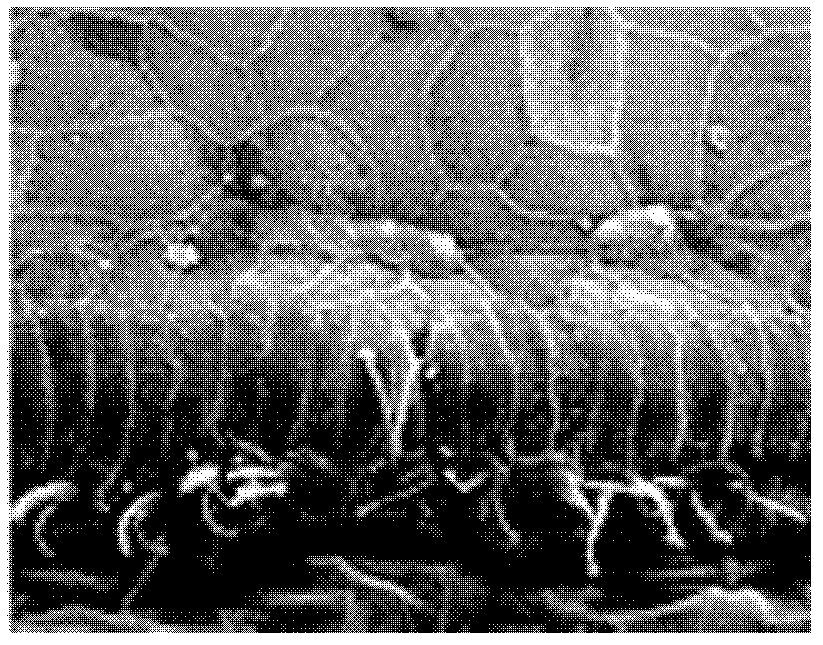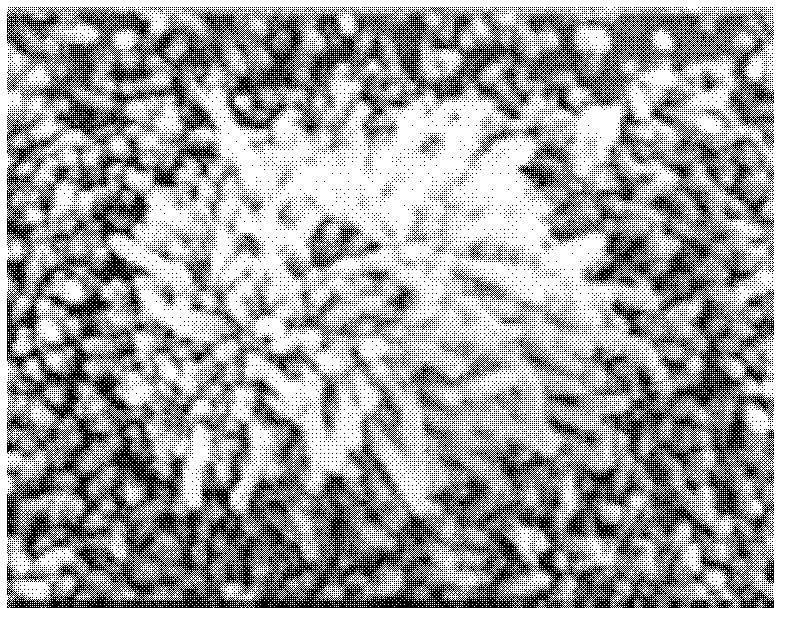Cochlear greater epithelial ridge (GER) cell line and its application
A cell line and epithelial technology, applied in the field of cell line construction, can solve problems such as difficulty in obtaining precursor cells
- Summary
- Abstract
- Description
- Claims
- Application Information
AI Technical Summary
Problems solved by technology
Method used
Image
Examples
preparation example Construction
[0043] Preferably, the preparation method of the cochlear large epithelial crest cell line provided by the present invention further includes the step of gene detection.
[0044] The above gene detection is RT-PCR detection of the Math1 gene in the cochlear large epithelial crest cell line.
[0045] Preferably, after the cells of the cochlear large epithelial crest cell line are massively expanded, total RNA is extracted, and RT-PCR is used to detect whether the Math1 gene exists.
[0046] The present invention also provides an application of a cochlear large epithelial crest cell line containing the Math1 gene and having a preservation number of CGMCC No. 4719 in the research on the differentiation and regeneration of hair cells. The cell line grows fast and is easy to culture. After being introduced into the noise-induced cochlear model, it can express the characteristic marker protein myosin VIIa of hair cells, and can develop into stereocilia clusters with characteristics ...
Embodiment 1
[0049] Example 1 Isolation of large cochlear epithelial crest cells
[0050] Take P 0 -P 3 Rats were soaked in 75% alcohol for 5 minutes, decapitated along the junction of the head and neck, ophthalmic scissors removed most of the parietal bone and all brain tissue from the foramen magnum, exposed the middle cranial fossa and posterior cranial fossa, and completely removed the auditory bulb; In the PBS solution of pH=7.4, open the auditory bulb under a dissecting microscope (Olympus Company), peel off the volute, remove the bony cochlea, and gradually peel off the basement membrane from the bottom (tear off the spiral ligament and spiral ganglion); The basement membrane was transferred into 0.5 mg / mL thermolysin (Sigma company) solution (prepared from 0.01 mol / L PBS solution with pH=7.4, and 5 U / μL DNase (Promage company) was added at the same time, and incubated at 37 ° C for 27 min ;Under a high-power microscope, the epithelial cell sheet on the basement membrane was torn ...
Embodiment 2
[0051] Example 2 Establishment of cochlear large epithelial crest cell line
[0052] The large epithelial crest cells were co-cultured with retrovirus containing SV40 large T antigen, and 20ng / mL EGF and 8μg / mL polybrene were added at the same time. After two infections (6 hours each), the culture medium was replaced with 10% DMEM (20 ng / mL EGF was added). After culturing for 10 days, the culture was transferred to a 24-well culture plate by digestion with 0.125% trypsin. Through daily observation with an inverted microscope, clones of infected cells can be seen after a few days. While digesting with 0.125% trypsin, single clones are extracted with a pipette to obtain cell purification. The extracted cells were monoclonal inoculated into 96-well culture plates for proliferation and passage.
[0053] Transfection: Transfection was carried out when the cells in the 24-well culture plate grew to 80% confluence. 2 hours before transfection, 400 μL serum-free medium was changed t...
PUM
 Login to View More
Login to View More Abstract
Description
Claims
Application Information
 Login to View More
Login to View More - R&D
- Intellectual Property
- Life Sciences
- Materials
- Tech Scout
- Unparalleled Data Quality
- Higher Quality Content
- 60% Fewer Hallucinations
Browse by: Latest US Patents, China's latest patents, Technical Efficacy Thesaurus, Application Domain, Technology Topic, Popular Technical Reports.
© 2025 PatSnap. All rights reserved.Legal|Privacy policy|Modern Slavery Act Transparency Statement|Sitemap|About US| Contact US: help@patsnap.com



